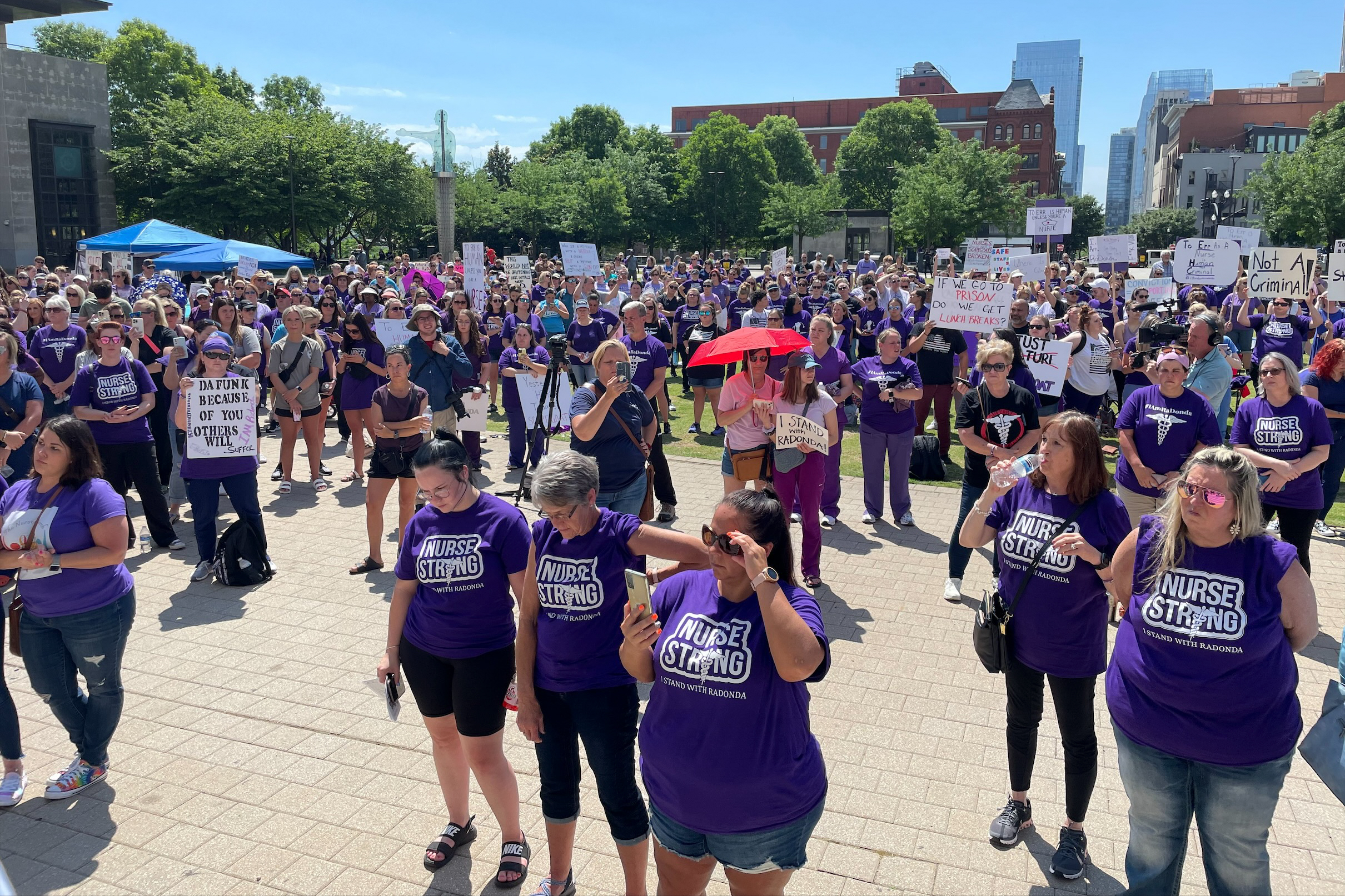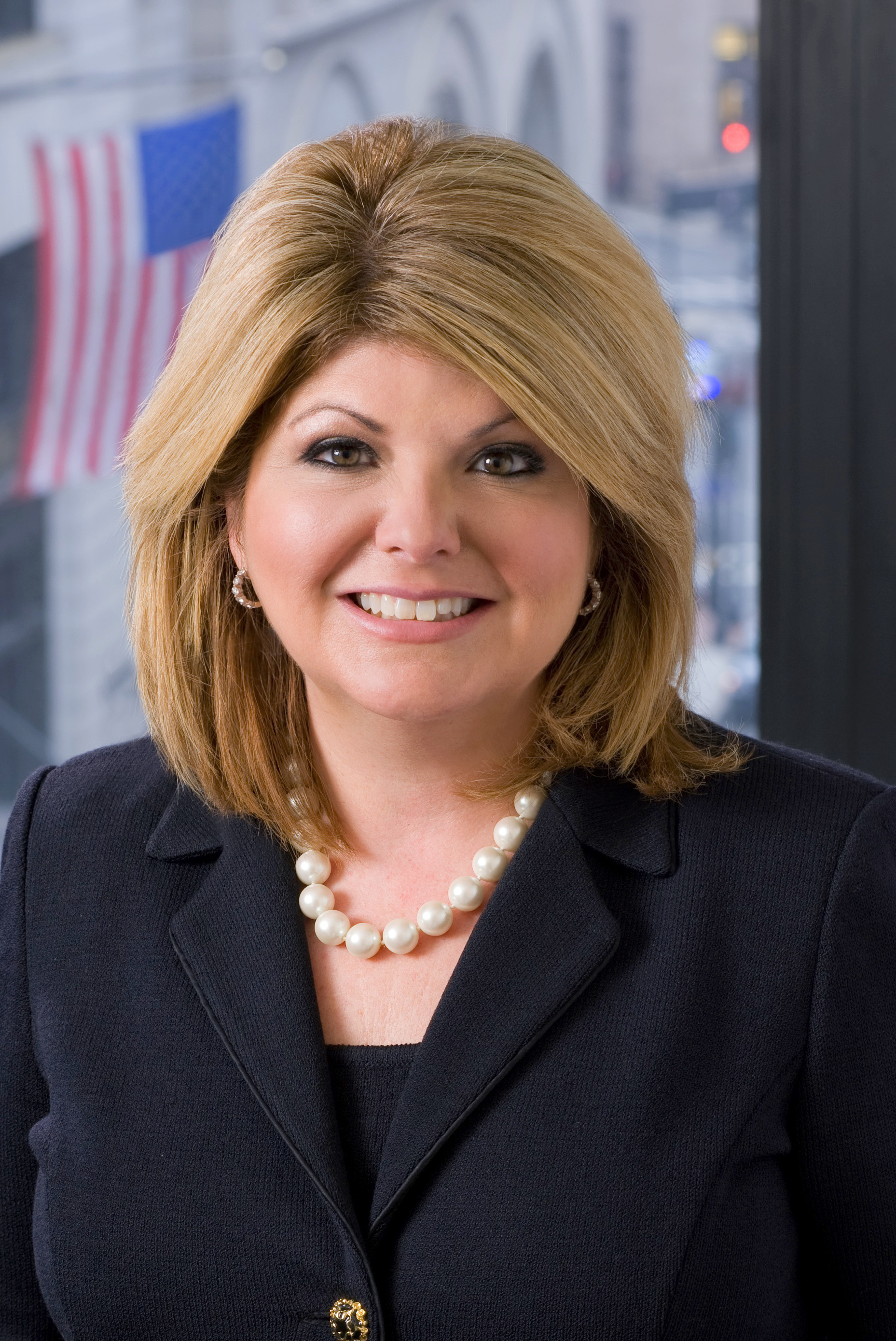En las primeras semanas de la pandemia, el doctor Lorenzo González, entonces residente de segundo año de medicina familiar en el Centro Médico Harbor-UCLA, trabajaba hasta 80 horas a la semana en la unidad de terapia intensiva. Siempre tenía miedo de contraer covid-19 y se sentía culpable por no tener tiempo suficiente para ayudar a su padre enfermo.
En abril de 2020, su padre, un jardinero jubilado, murió de insuficiencia cardíaca y pulmonar. González hizo el duelo solo. Su trabajo como médico en formación le exponía a un alto riesgo de contraer el virus, y no quería contagiar a su familia. El estrés económico también se apoderó de él al tener que hacer frente a los elevados costos del entierro.
Ahora, González reclama una mejor remuneración y prestaciones para los residentes que trabajan horarios agotadores en los hospitales públicos del condado de Los Angeles por lo que, según él, reciben menos de $18 la hora, mientras atienden a los pacientes más vulnerables del condado.
“Se están aprovechando de nuestro altruismo”, dijo González. Ahora es jefe de residentes de medicina familiar en Harbor-UCLA y presidente del Comité de Internos y Residentes (CIR), un sindicato nacional que representa a los médicos en prácticas y que forma parte del Sindicato Internacional de Empleados de Servicios (SEIU).
“Necesitamos que se reconozcan los sacrificios que hemos hecho”, señaló.
Los residentes son médicos recién recibidos, que han terminado la carrera de medicina, y deben pasar de tres a siete años de formación en hospitales universitarios antes de poder ejercer de forma independiente.
Bajo la supervisión de un médico profesor, los residentes examinan, diagnostican y tratan a los pacientes. Algunos buscan formación adicional en especialidades médicas como “fellows” (práctica de especialización).
Estos médicos en formación se están agrupando en California, y otros estados, para exigir mayores salarios y mejores beneficios y condiciones de trabajo, luego de la enorme presión vivida durante la pandemia.
Así, se suman a enfermeras y enfermeros, auxiliares de enfermería y otros trabajadores de salud que se están sindicalizando y amenazan con ir a la huelga, ya que la escasez de personal, el aumento del costo de la vida y la falta de uniformidad en el suministro de equipos de protección personal y vacunas contra covid les han llevado al límite.
Más de 1,300 residentes sindicalizados y otros médicos en formación de tres hospitales públicos del condado de Los Angeles, incluido el Harbor-UCLA, votarán el 30 de mayo si se declaran en huelga para pedir un aumento de salarios y de gastos de alojamiento, tras un mes de bloqueo de las negociaciones con el condado.
Desde marzo, los residentes de Stanford Health Care, la Facultad de Medicina Keck de la Universidad del Sur de California y el Centro Médico de la Universidad de Vermont se han sindicado.
“Los residentes siempre han trabajado horarios de locos, pero el estrés de la pandemia les afectó mucho”, explicó John August, director de la Facultad de Relaciones Industriales y Laborales de la Universidad de Cornell.
La Asociación de Escuelas de Medicina de Estados Unidos, un grupo que representa a los hospitales universitarios y a las facultades de medicina, no abordó directamente la tendencia a la sindicalización de los residentes, pero la jefa de atención sanitaria de la organización, la doctora Janis Orlowski, comunicó a través de un vocero que una residencia es un aprendizaje laboral, y que la función principal de un residente es formarse.
Los residentes cobran como aprendices mientras estudian, se forman y trabajan, dijo Orlowski, y la asociación trabaja para garantizar que reciban una formación y un apoyo eficaces.
David Simon, vocero de la Asociación de Hospitales de California, no quiso hacer comentarios. Pero remitió a un estudio publicado en JAMA Network Open, en septiembre, en el que se mostraba que los residentes de cirugía en programas sindicados no reportaban menores tasas de agotamiento que los de los programas no sindicados.
Según el sindicato nacional, hasta el momento ningún nuevo grupo sindical ha alcanzado ningún acuerdo. Pero algunos de los más antiguos han conseguido mejoras en los salarios, las prestaciones y las condiciones de trabajo. El año pasado, un sindicato de residentes de la Universidad de California-Davis consiguió subvenciones para la vivienda y permisos parentales pagos.
Con más de 20,000 miembros, el CIR/SEIU representa a uno de cada siete médicos en formación en Estados Unidos. Su directora ejecutiva, Susan Naranjo, dijo que antes de la pandemia se organizaba un nuevo grupo sindical cada año, y que en el último año y medio se han unido ocho.
Las condiciones de trabajo de los residentes ya habían sido objeto de escrutinio mucho antes de la pandemia.
El salario medio de los residentes en Estados Unidos en 2021 era de $64,000, según MedScape, un sitio web de noticias para médicos, y los residentes pueden trabajar hasta 24 horas en un turno, pero no más de 80 horas a la semana.
Aunque una encuesta cuyos resultados se publicaron el año pasado encontró que el 43% de los residentes se sentían compensados adecuadamente, los que se están sindicalizando dicen que los salarios son demasiado bajos, especialmente teniendo en cuenta la carga de trabajo de los residentes, su deuda de préstamos estudiantiles y el aumento del costo de vida.
La tasa salarial afecta de manera desproporcionada a los residentes de comunidades de bajos ingresos y de color, afirmó González, porque tienen menos ayuda financiera de la familia para subvencionar su educación médica y para pagar otros gastos.
Sin embargo, al tener poco control sobre el lugar en el que se forman —a los graduados de escuelas de medicina se les asigna su residencia mediante un algoritmo—, individualmente, los residentes tienen un poder de negociación limitado con los hospitales.
Para los residentes sindicalizados que buscan ser escuchados, los aumentos salariales y los beneficios, como los estipendios de vivienda, son a menudo la prioridad, dijo Naranjo.
Los pacientes merecen médicos que no estén agotados y preocupados por el estrés financiero, dijo la doctora Shreya Amin, “fellow” de endocrinología en el Centro Médico de la Universidad de Vermont. A Amin le sorprendió que la institución se negara a reconocer al sindicato de residentes, teniendo en cuenta los sacrificios personales que hicieron durante la pandemia.
Si un hospital no reconoce voluntariamente a un sindicato, el CIR puede solicitar que la Junta Nacional de Relaciones Laborales administre una elección. El sindicato nacional lo hizo en abril, y con una mayoría de votos certificada, la sección de Vermont puede ahora comenzar la negociación colectiva, señaló Naranjo.
Annie Mackin, vocera del centro médico, declaró en un correo electrónico que está orgullosa de sus residentes por haber prestado una atención excepcional durante la pandemia y respeta su decisión de afiliarse a un sindicato. Mackin no quiso referirse a las preocupaciones de los residentes sobre las condiciones de trabajo.
La doctora Candice Chen, profesora de políticas de salud en la Universidad George Washington, cree que los Centros de Servicios de Medicare y Medicaid (CMS) también tienen cierta responsabilidad en las condiciones de trabajo de los residentes. Dado que la agencia paga a los hospitales universitarios para que formen a los residentes, debería responsabilizar a los centros de cómo los tratan, dijo.
Y el Consejo de Acreditación para la Educación Médica de Postgrado, que establece las normas laborales y educativas para los programas de residencia, se está moviendo en la dirección correcta con nuevos requisitos como la licencia familiar pagada, agregó, pero necesita hacer más.
Está por verse hasta dónde llegarán estos sindicatos para conseguir sus objetivos.
Las huelgas son poco frecuentes entre los médicos. La última huelga del CIR fue en 1975, la realizaron los residentes de 11 hospitales de Nueva York.
Naranjo aseguró que una huelga sería el último recurso para sus miembros en el condado de Los Angeles, pero culpó al condado de retrasar y cancelar continuamente las sesiones de negociación. Entre sus demandas, el sindicato pide que el condado iguale el aumento salarial concedido a los miembros del SEIU 721, un sindicato que representa a otros empleados del condado, y que se conceda un subsidio de vivienda de $10,000.
Las encuestas realizadas a los miembros del sindicato han revelado que la mayoría de los médicos residentes del condado de Los Angeles dicen trabajar 80 horas a la semana, según Naranjo.
Una vocera del Departamento de Servicios de Salud del condado de Los Angeles, Coral Itzcalli, agradeció a su “heroica” fuerza de trabajo de primera línea por proporcionar “la mejor atención de su clase” y reconoció la importante carga que la pandemia ha supuesto para sus vidas personales y profesionales. Dijo que el Consejo de Acreditación para la Educación Médica de Postgrado establece los límites de horas y que la mayoría de los médicos en formación dicen trabajar “significativamente menos” de 80 horas a la semana.
Jesús Ruiz, vocero de la Oficina Ejecutiva del condado de Los Angeles, que gestiona las negociaciones laborales, indicó por correo electrónico que el condado espera llegar a un “contrato justo y fiscalmente responsable” con el sindicato.
Se espera que los resultados de la votación sobre la huelga se anuncien el 31 de mayo, según comunicó el sindicato.
Esta historia fue producida por KHN, que publica California Healthline, un servicio editorialmente independiente de la California Health Care Foundation.
KHN (Kaiser Health News) is a national newsroom that produces in-depth journalism about health issues. Together with Policy Analysis and Polling, KHN is one of the three major operating programs at KFF (Kaiser Family Foundation). KFF is an endowed nonprofit organization providing information on health issues to the nation.
USE OUR CONTENT
This story can be republished for free (details).
from Health Industry – Kaiser Health News


